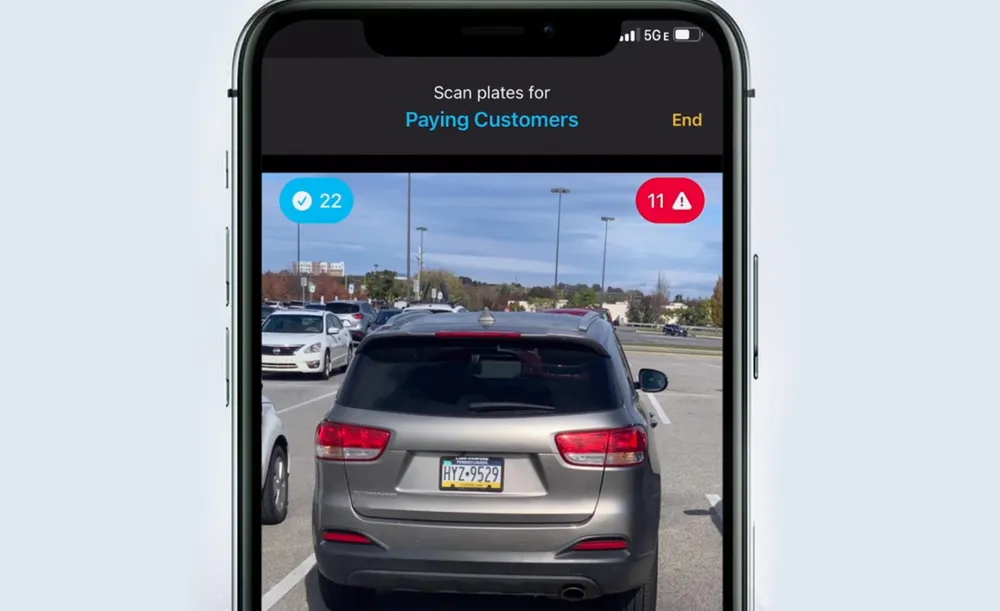Thanks to a partnership between parking technology provider Streetline and Cisco, drivers in the San Francisco bay area of the US are now able to locate the nearest vacant parking space using just their smartphone and a mobile app called Parker. First deployed in Sausalito, the system has now been installed in San Mateo and San Carlos. It uses a small wireless sensor about the size of a golf hole installed in the parking bay to detect whether the space is occupied by a vehicle. Each sensor wirelessly comm
December 6, 2012
Read time: 3 mins
Thanks to a partnership between parking technology provider 579 Streetline and 1028 Cisco, drivers in the San Francisco bay area of the US are now able to locate the nearest vacant parking space using just their smartphone and a mobile app called Parker.
First deployed in Sausalito, the system has now been installed in San Mateo and San Carlos. It uses a small wireless sensor about the size of a golf hole installed in the parking bay to detect whether the space is occupied by a vehicle. Each sensor wirelessly communicates with the other sensors in the area as part of a Cisco wi-fi mesh network, automatically negotiating the most efficient connection to the cloud via an internet gateway box installed nearby.
Drivers can access the data provided by the parking sensors via the Parker app, available for Android and iPhone to find real time information on which city blocks or parking garages have parking available and how many spaces there are. Users can then navigate to where those spaces are available and mark where they parked to find the car later. In cities that allow users to pay online, Parker can even be used to pay for parking or feed the meter.
As well as providing real time availability of on-street parking spaces, the app has some notable features, including hands-free voice navigation, the ability to toggle between availability and price, easy access to hours, rates and time limits and the ability to enter an address and view parking options nearest to that destination. Users can also mark their parking space on the Parker map, set reminders, take a picture of the car and take notes about the location. Parker also saves parking history for easy access later.
“I’m pleased that San Mateo was chosen for this project to bring innovative parking technology to our city,” said Larry Patterson, director of public works for the City of San Mateo. “This tool is consistent with San Mateo’s strong technology industry and is an example of the city’s commitment to efficiently managing parking to support our downtown.”
By reducing the amount of time that drivers spend looking for parking, Streetline, Cisco, and city planners hope to also reduce traffic, pollution, and driver frustration, as well. The developers are in talks with city planners around the US with an aim to expand smart parking beyond the pilot program areas and with automotive OEMs to link the parking data into in-car navigation systems.
“By deploying this cutting-edge smart parking technology, San Mateo has taken a great step towards becoming a Smarter City,” said Zia Yusuf, CEO of Streetline. “We are pleased to be working alongside Cisco to bring this technology to San Mateo and hopefully resolve one of the most pressing concerns facing today’s cities – parking.”
First deployed in Sausalito, the system has now been installed in San Mateo and San Carlos. It uses a small wireless sensor about the size of a golf hole installed in the parking bay to detect whether the space is occupied by a vehicle. Each sensor wirelessly communicates with the other sensors in the area as part of a Cisco wi-fi mesh network, automatically negotiating the most efficient connection to the cloud via an internet gateway box installed nearby.
Drivers can access the data provided by the parking sensors via the Parker app, available for Android and iPhone to find real time information on which city blocks or parking garages have parking available and how many spaces there are. Users can then navigate to where those spaces are available and mark where they parked to find the car later. In cities that allow users to pay online, Parker can even be used to pay for parking or feed the meter.
As well as providing real time availability of on-street parking spaces, the app has some notable features, including hands-free voice navigation, the ability to toggle between availability and price, easy access to hours, rates and time limits and the ability to enter an address and view parking options nearest to that destination. Users can also mark their parking space on the Parker map, set reminders, take a picture of the car and take notes about the location. Parker also saves parking history for easy access later.
“I’m pleased that San Mateo was chosen for this project to bring innovative parking technology to our city,” said Larry Patterson, director of public works for the City of San Mateo. “This tool is consistent with San Mateo’s strong technology industry and is an example of the city’s commitment to efficiently managing parking to support our downtown.”
By reducing the amount of time that drivers spend looking for parking, Streetline, Cisco, and city planners hope to also reduce traffic, pollution, and driver frustration, as well. The developers are in talks with city planners around the US with an aim to expand smart parking beyond the pilot program areas and with automotive OEMs to link the parking data into in-car navigation systems.
“By deploying this cutting-edge smart parking technology, San Mateo has taken a great step towards becoming a Smarter City,” said Zia Yusuf, CEO of Streetline. “We are pleased to be working alongside Cisco to bring this technology to San Mateo and hopefully resolve one of the most pressing concerns facing today’s cities – parking.”









